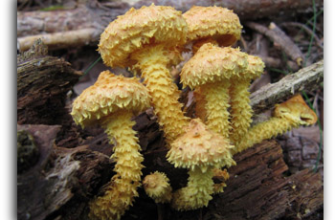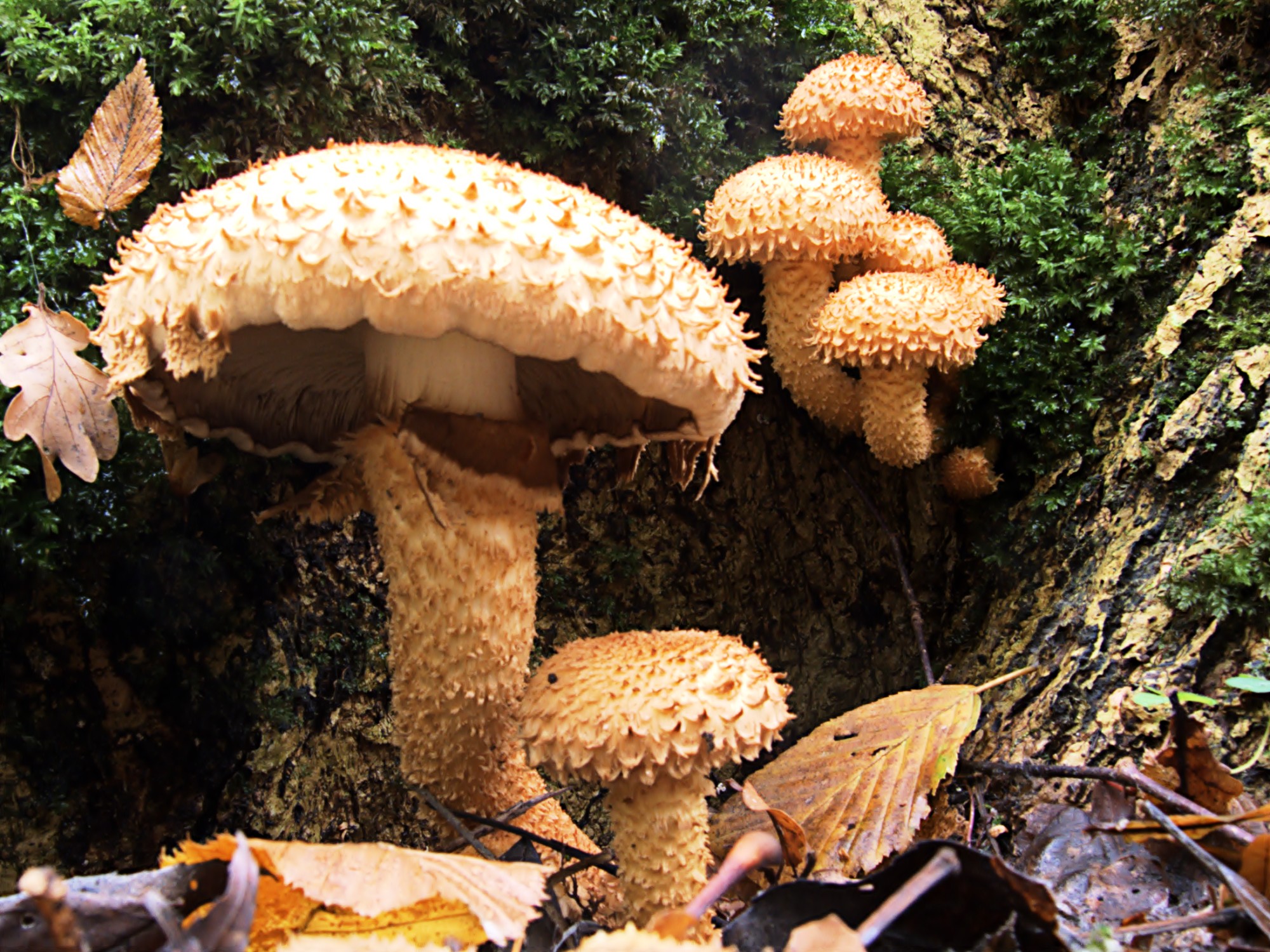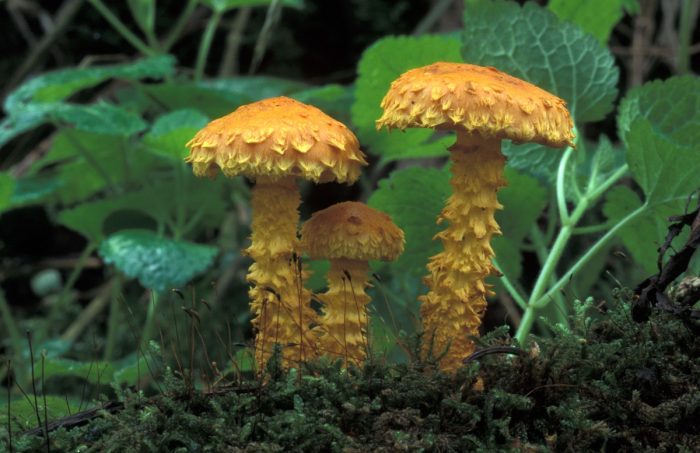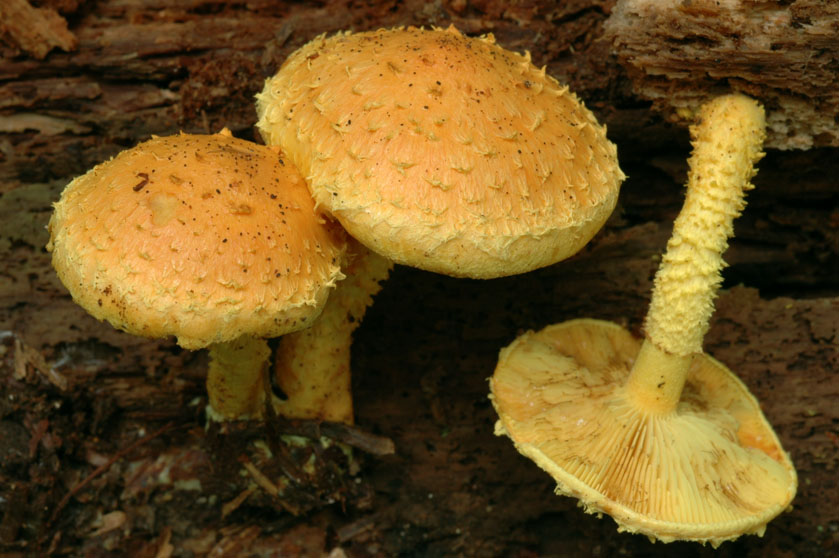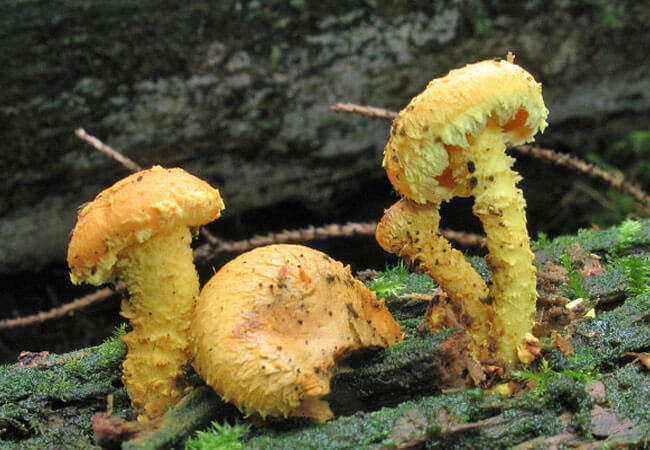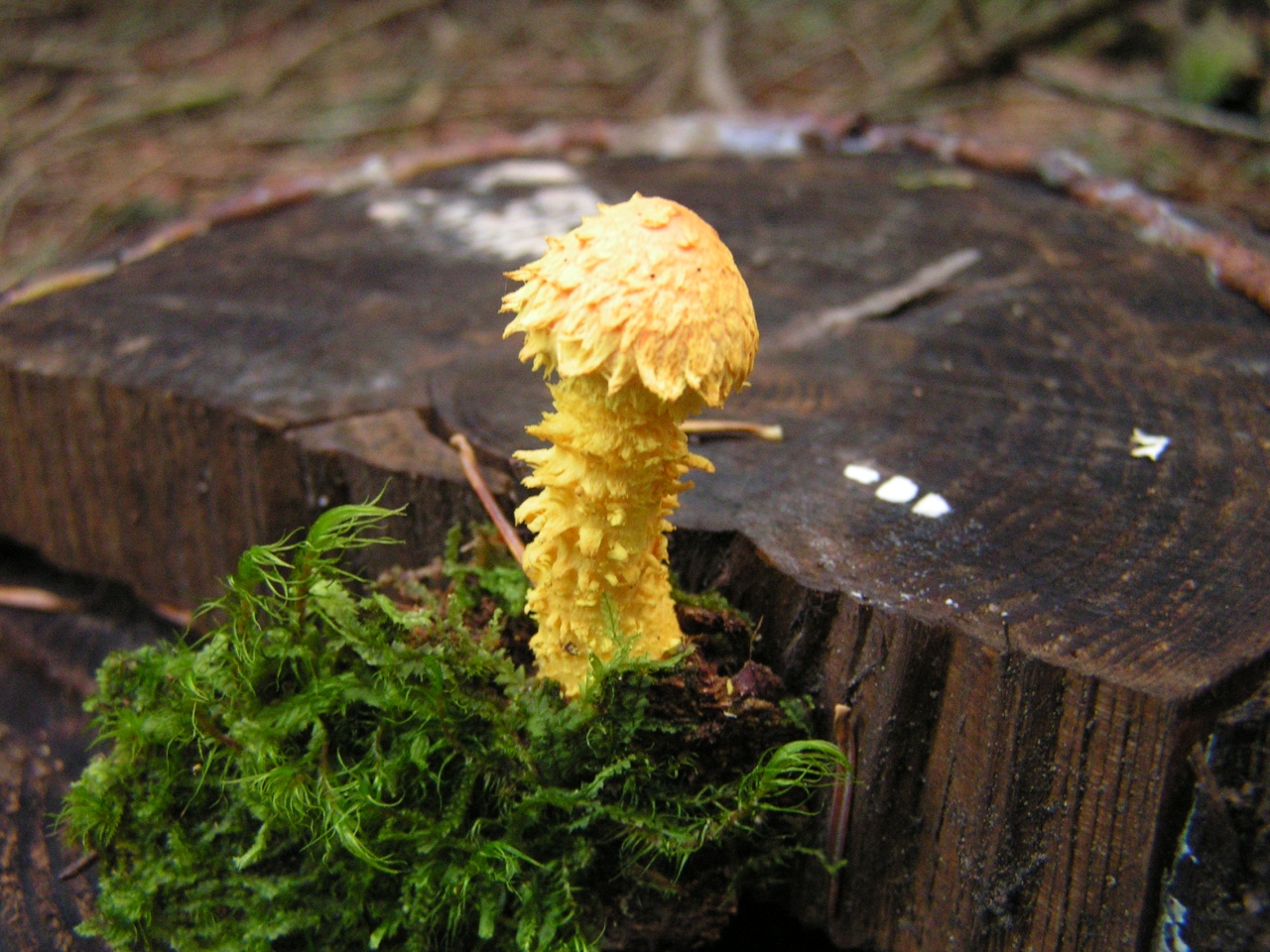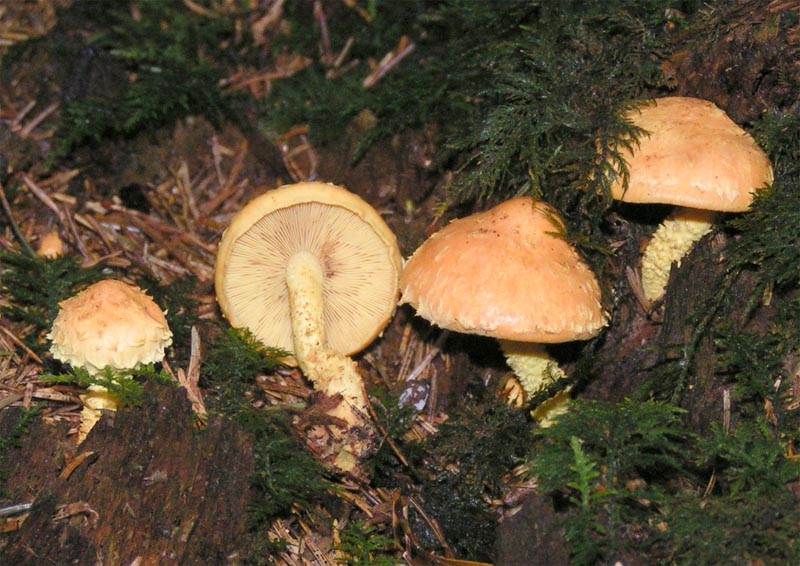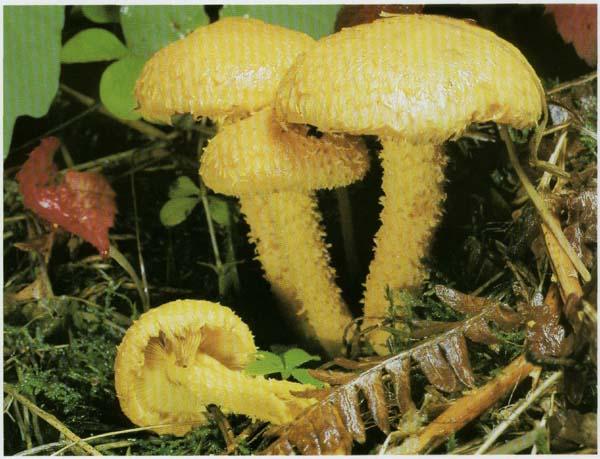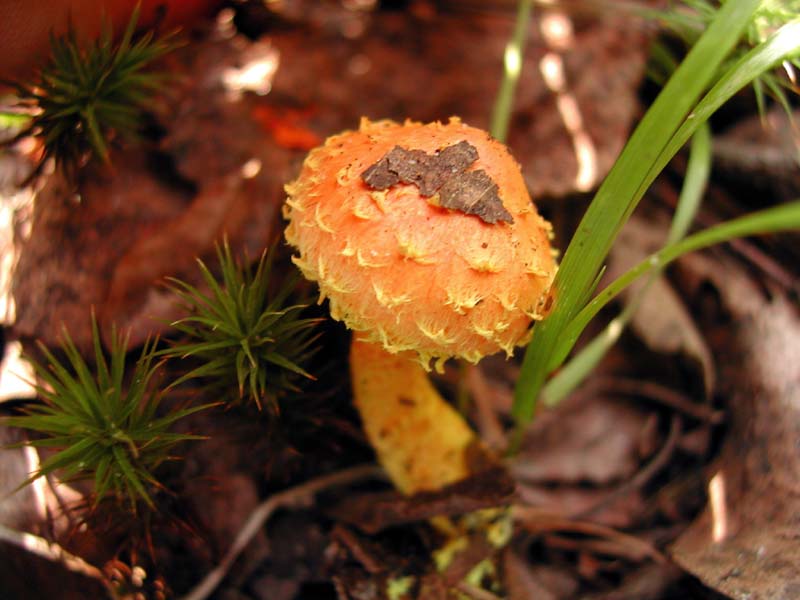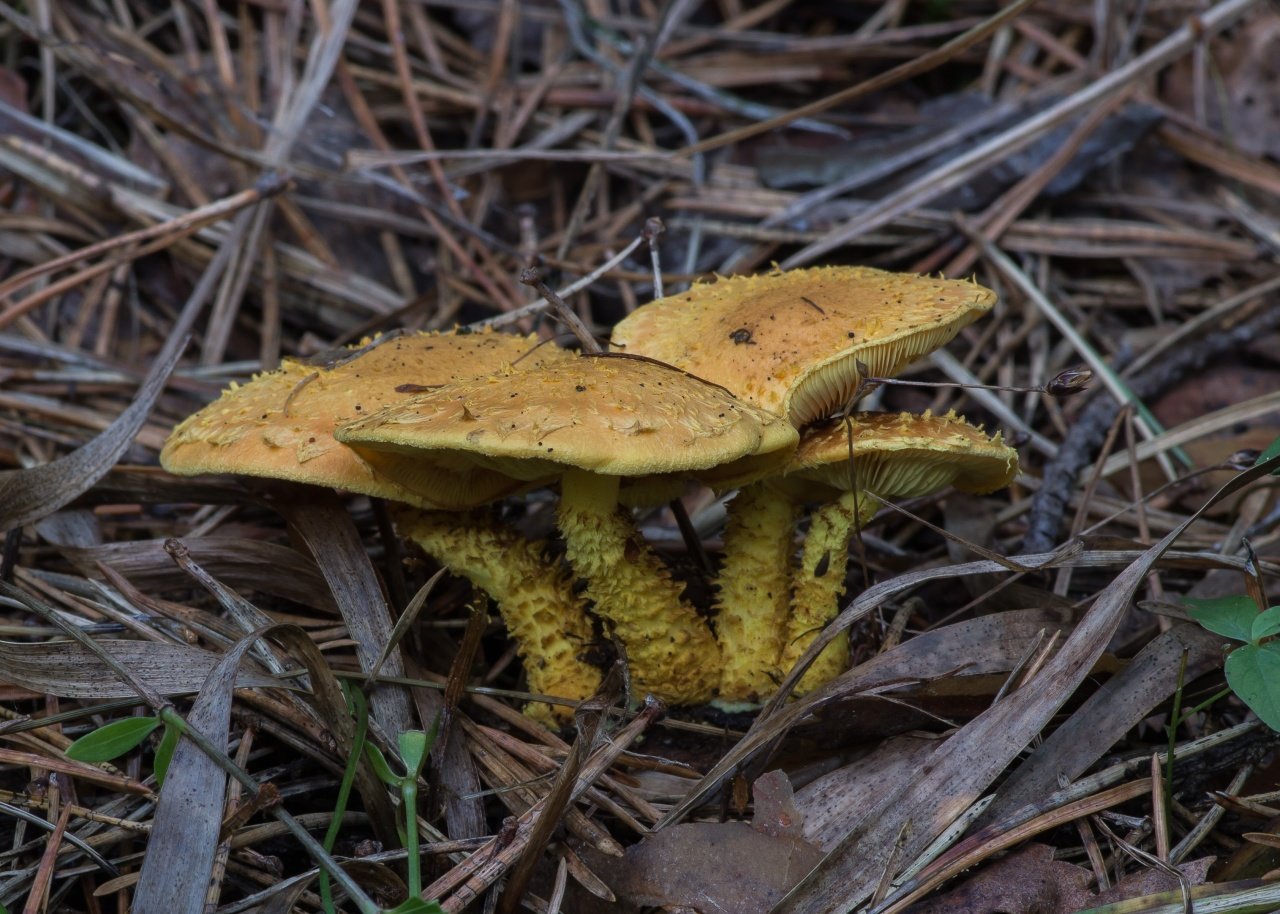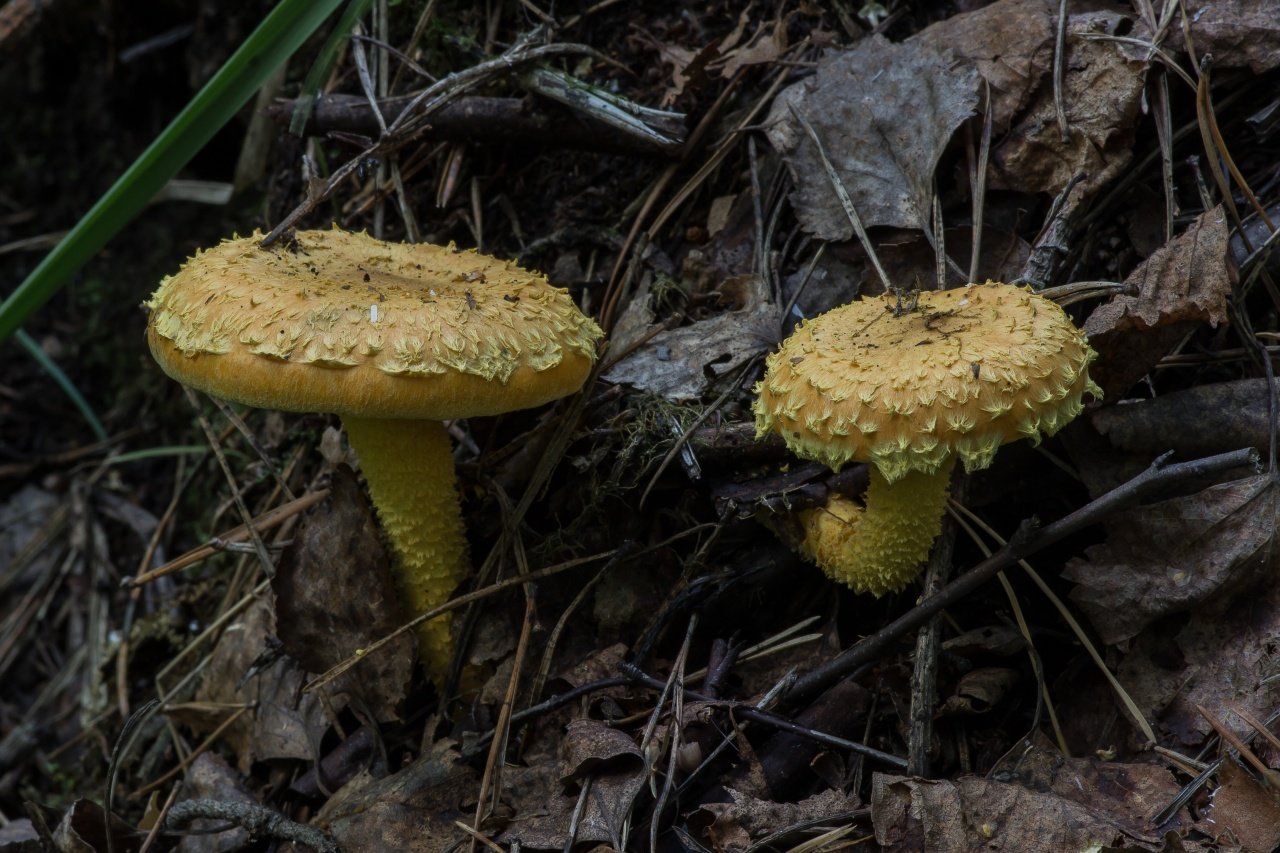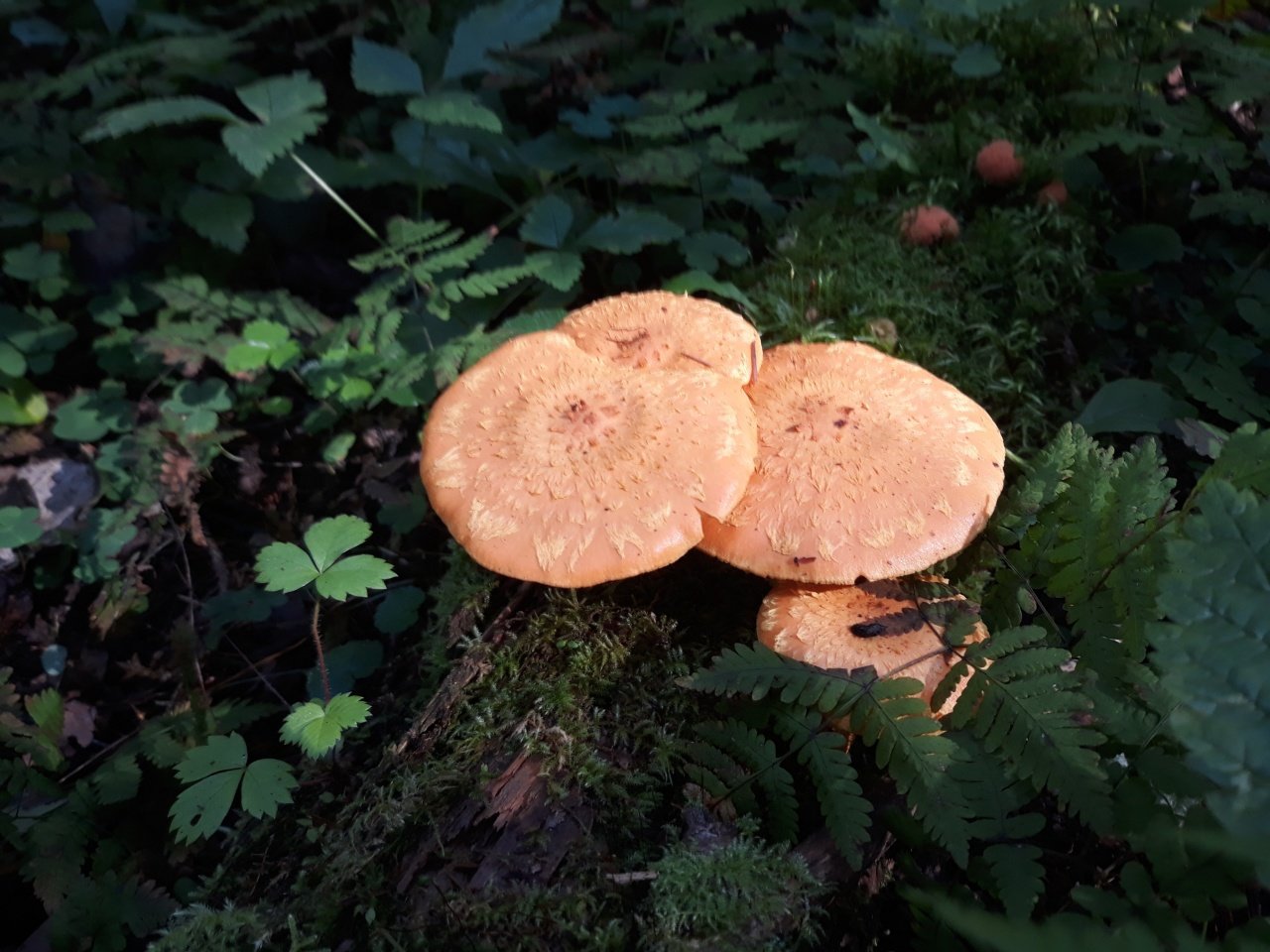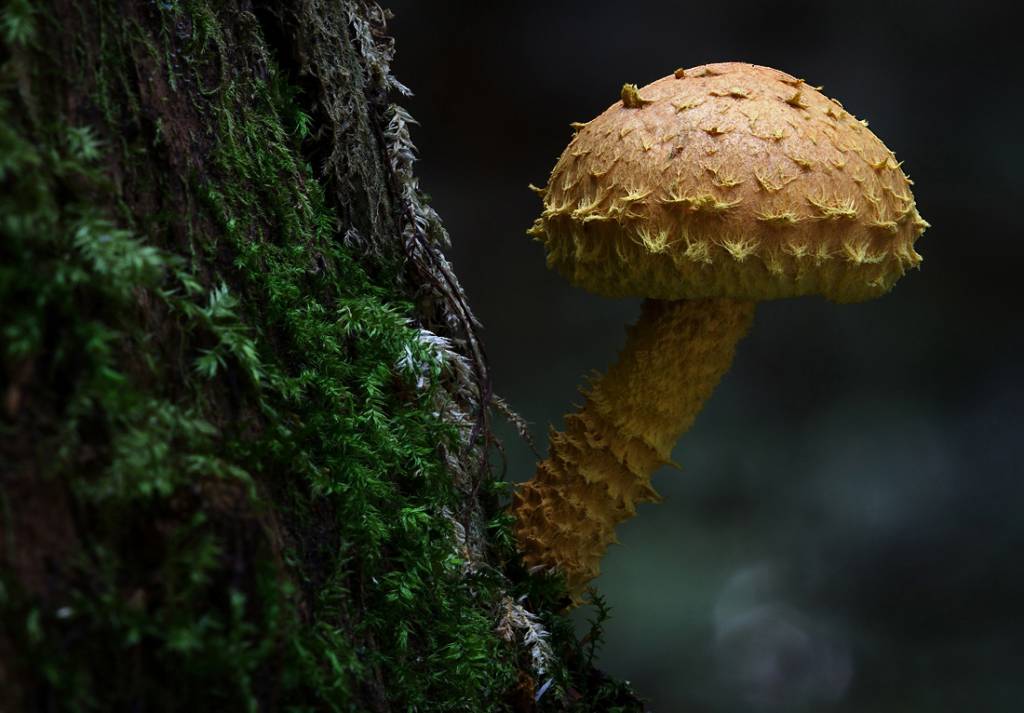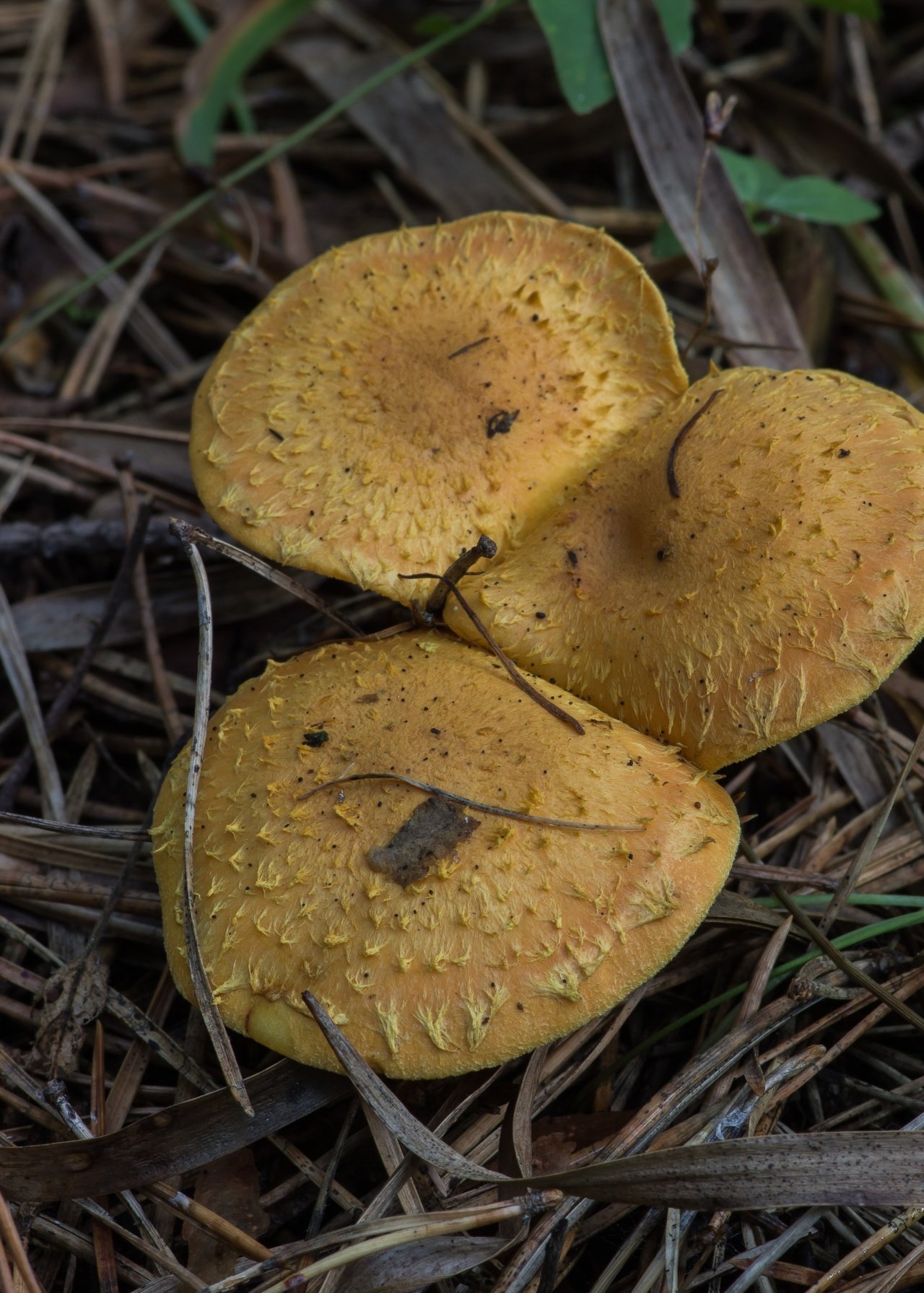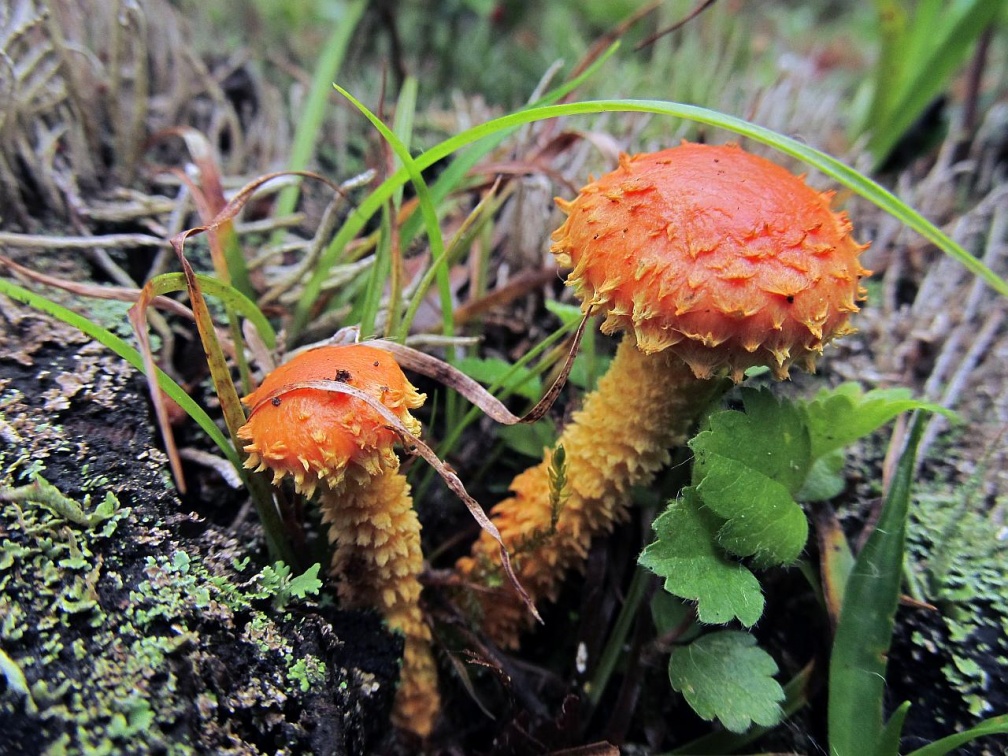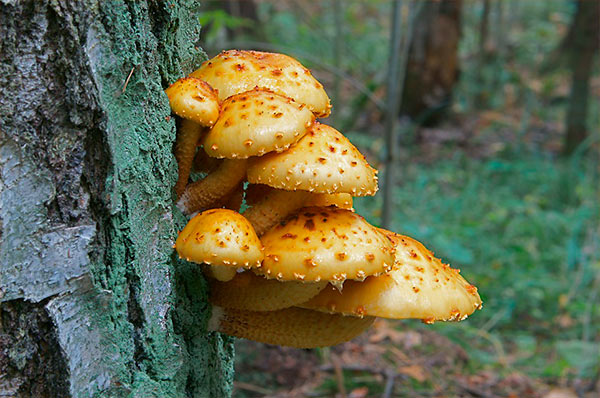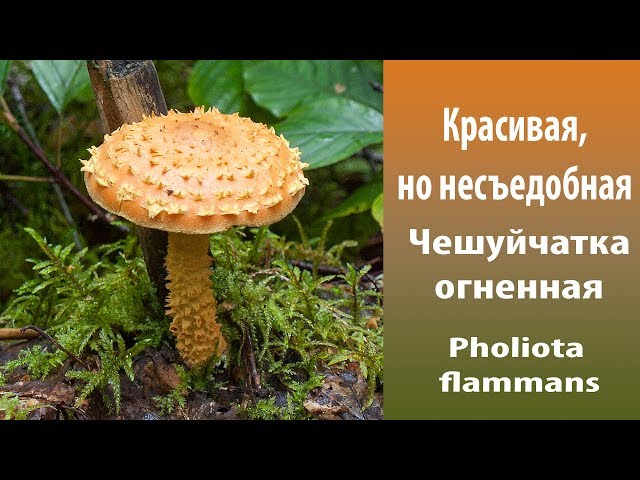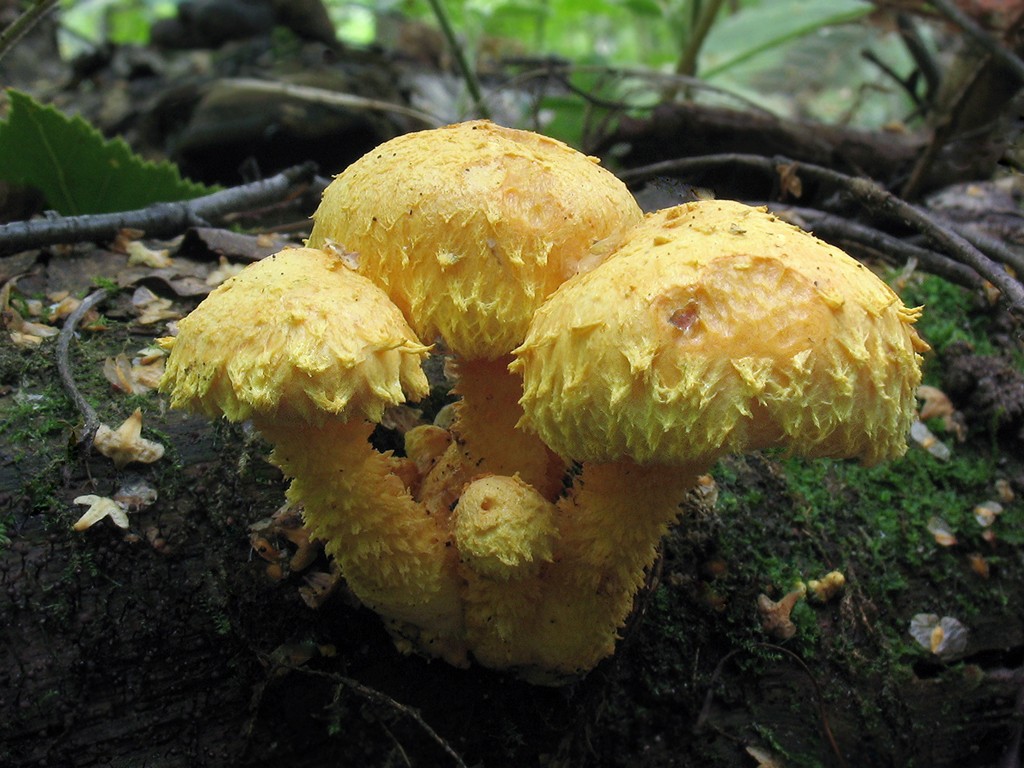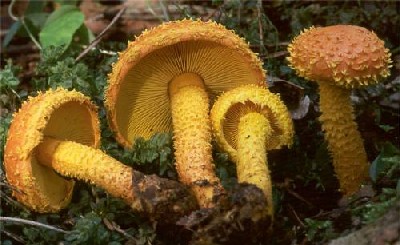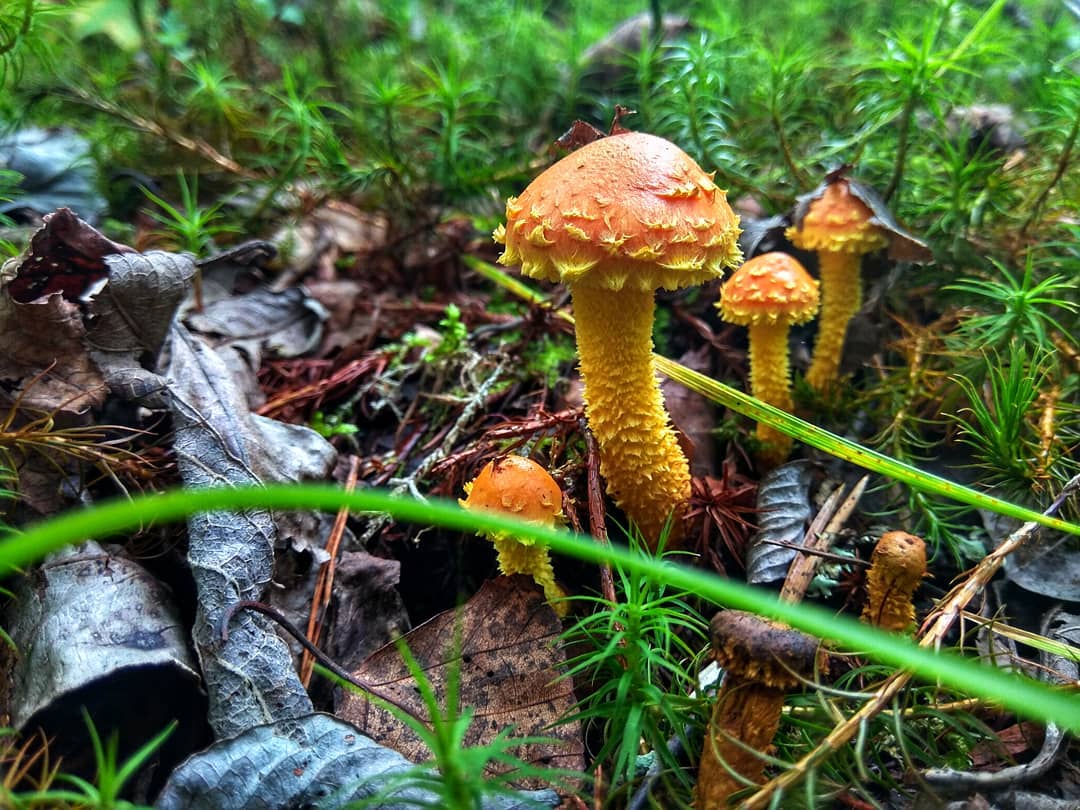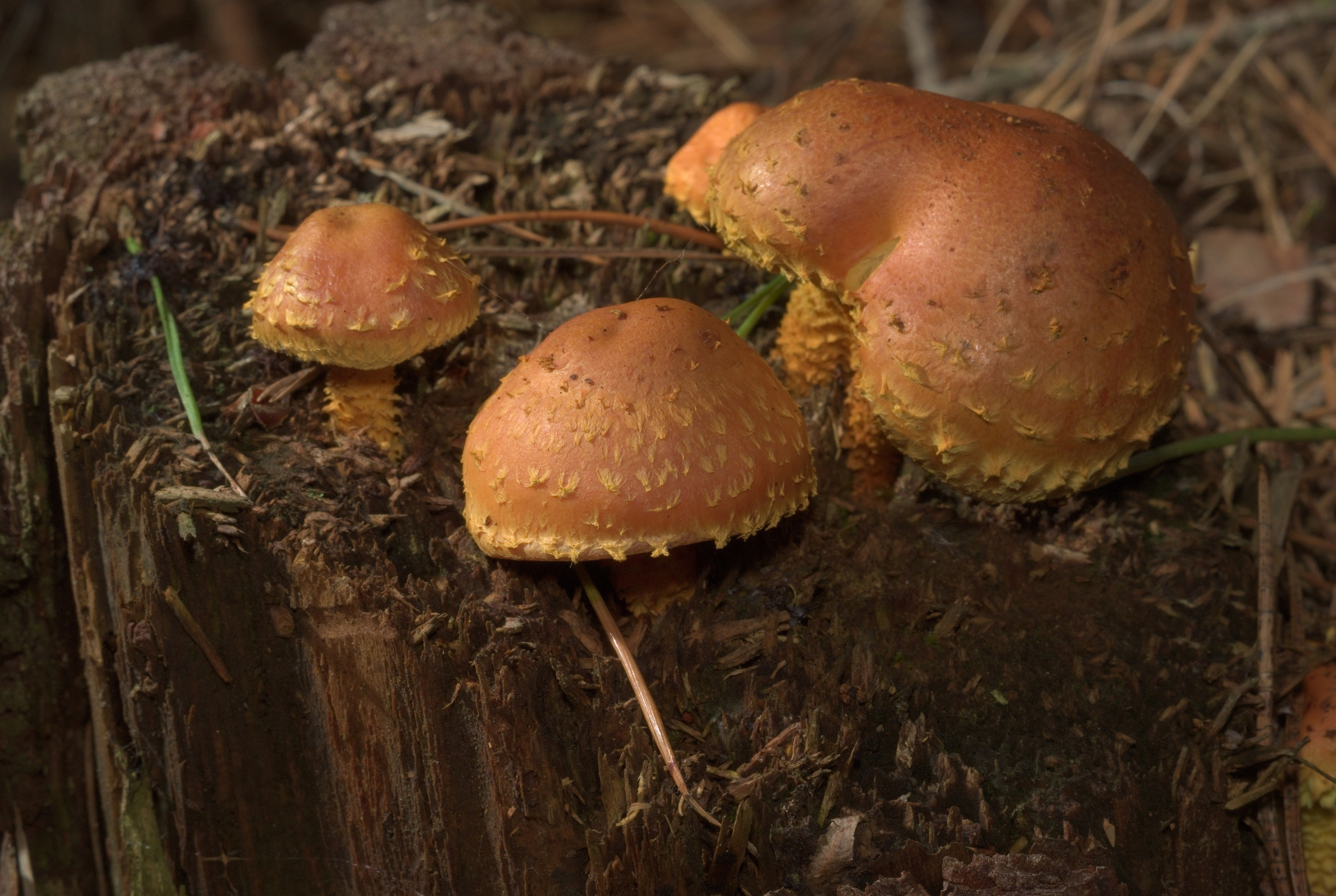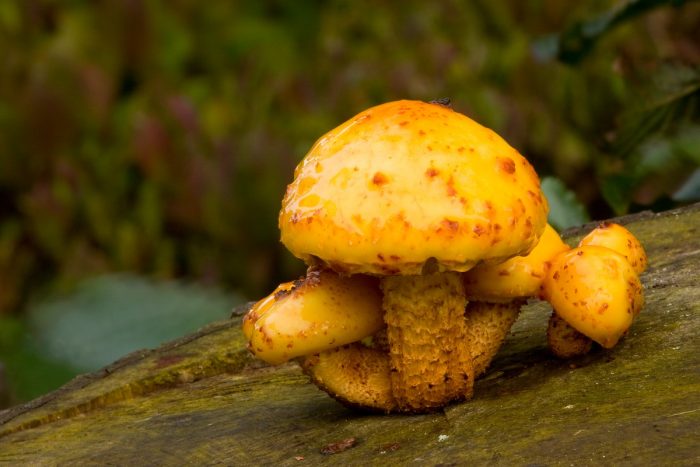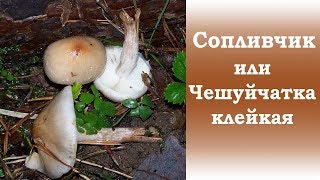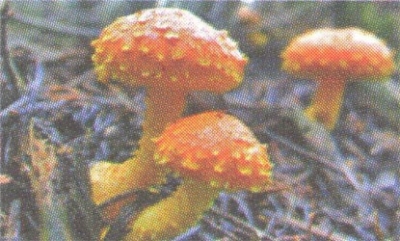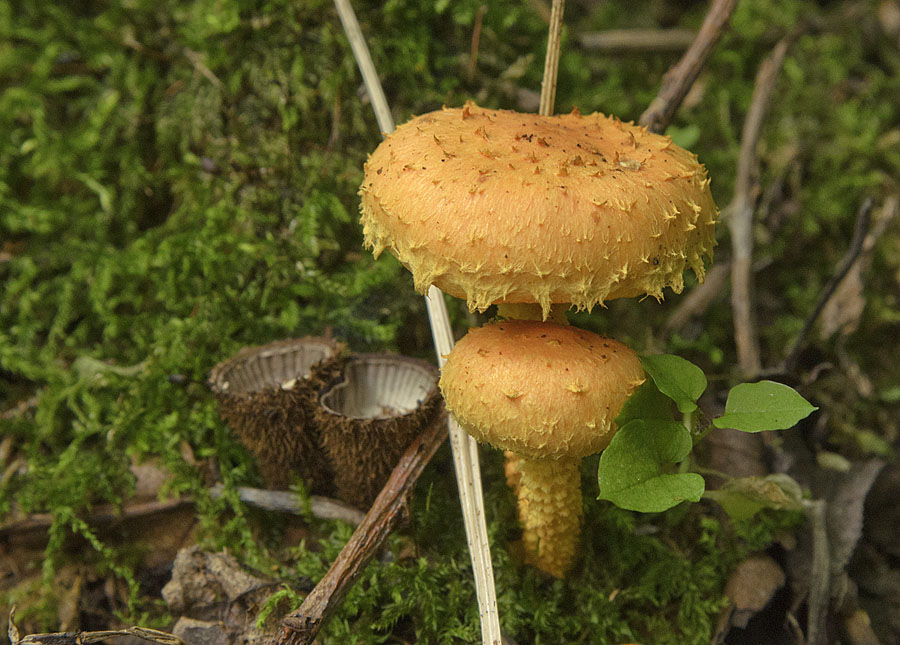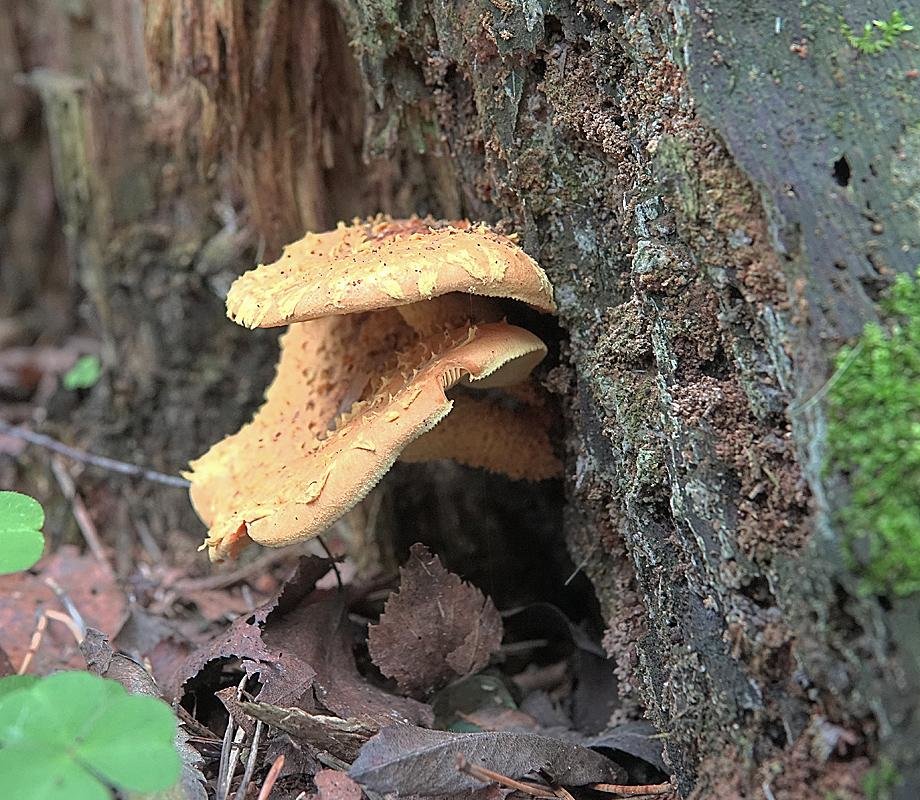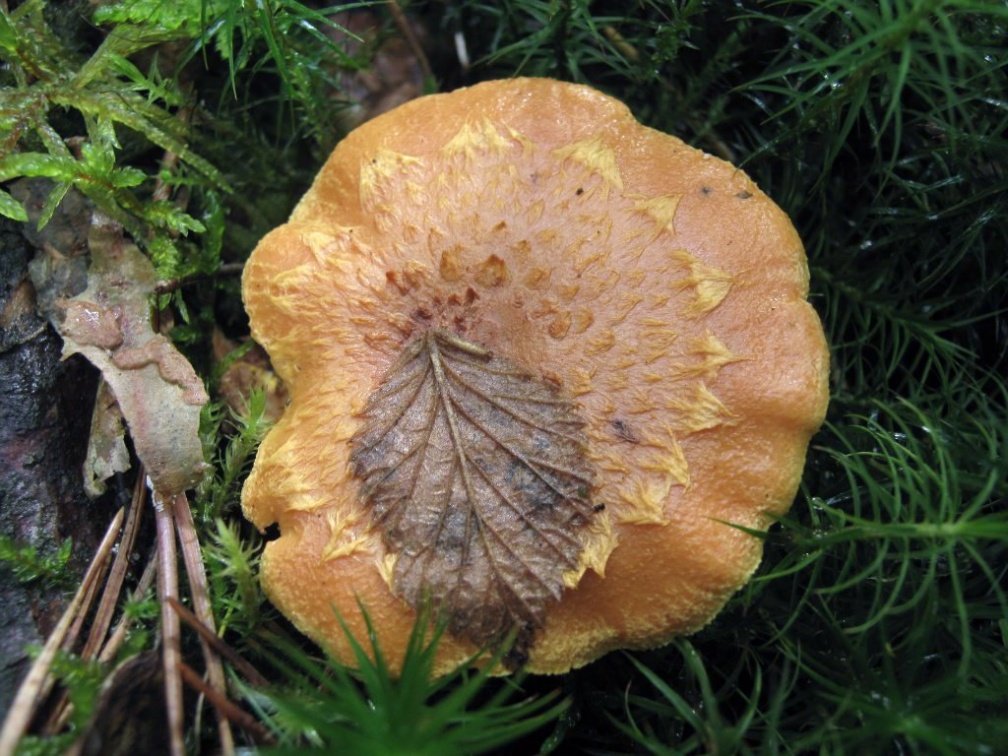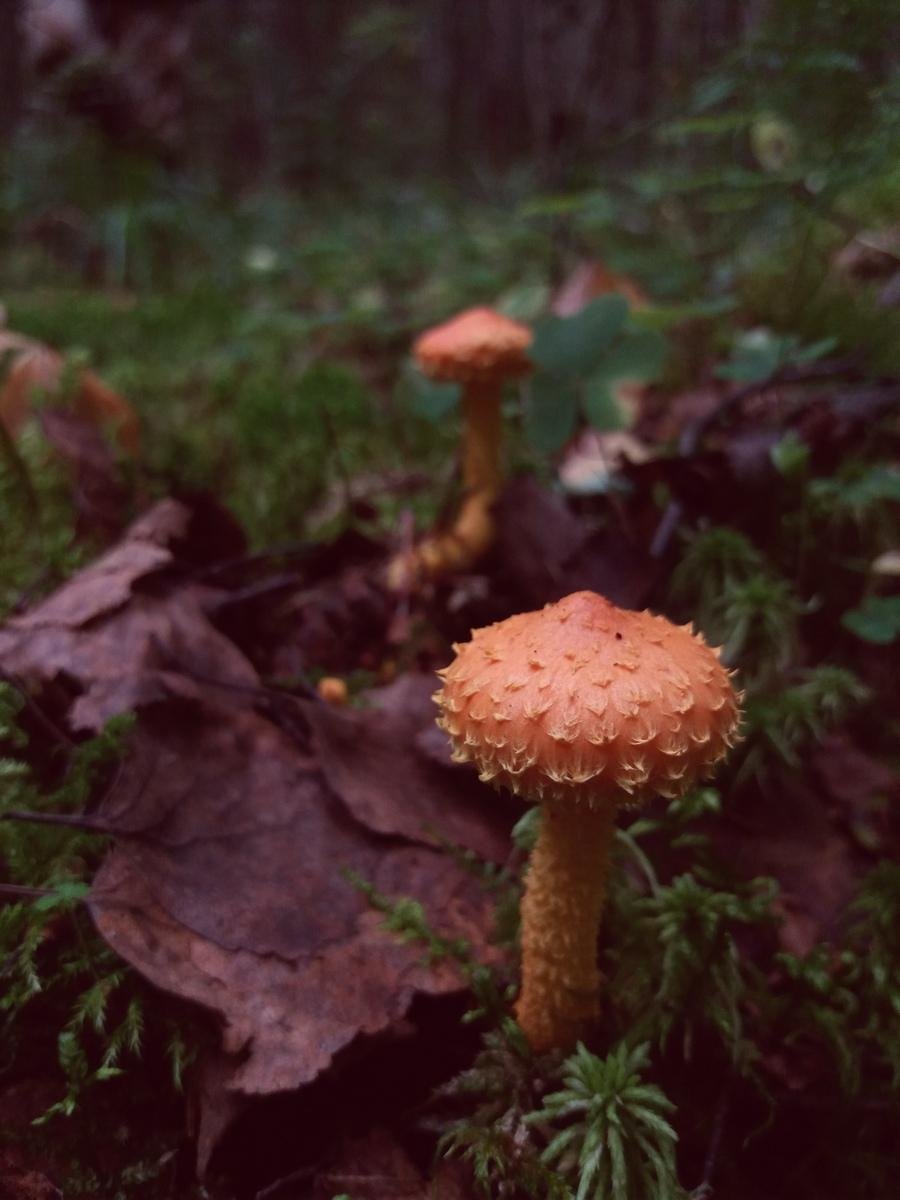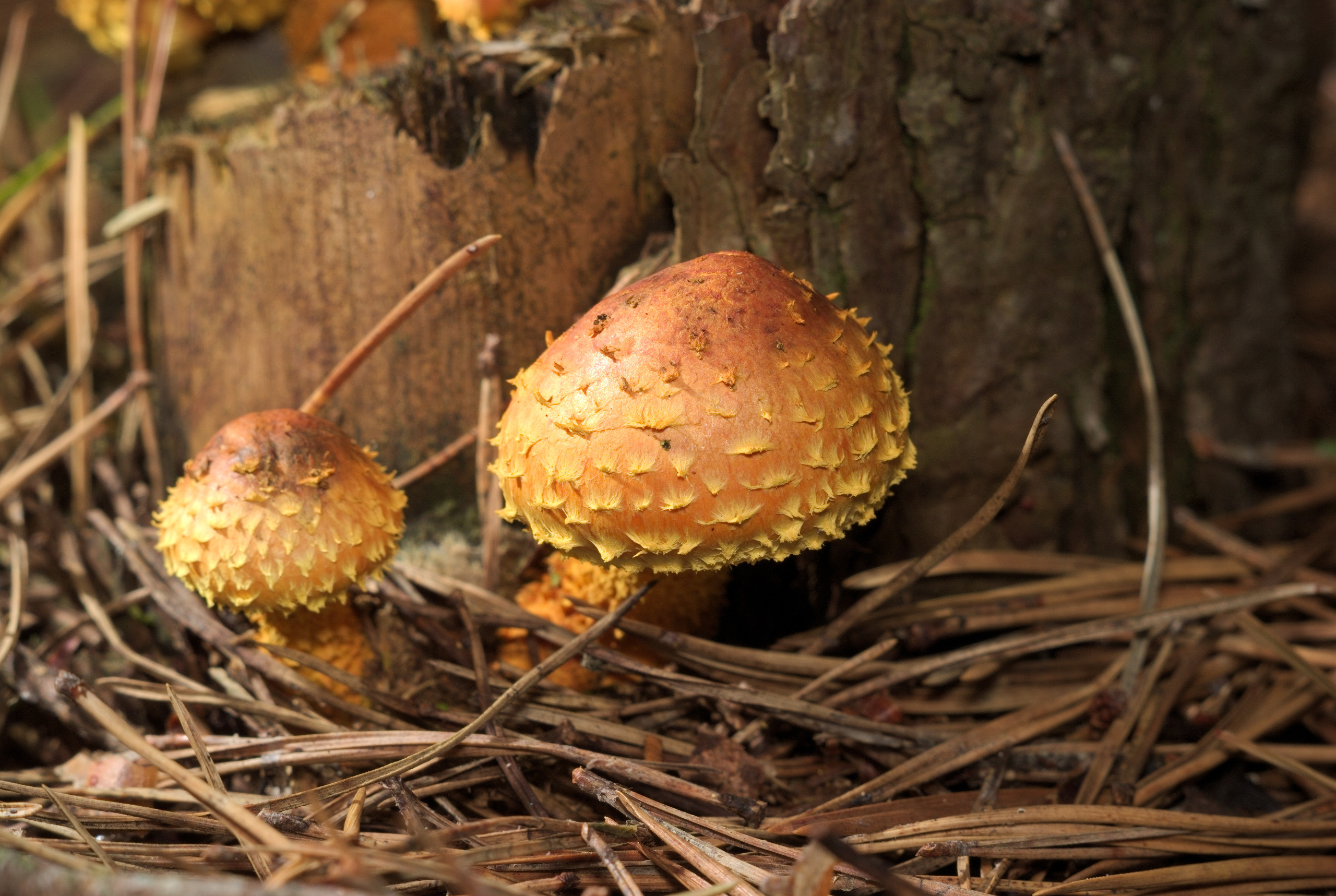Growing scales at home

For the cultivation of flakes, substrates from wood processing industry waste are suitable, for example, sawdust of deciduous trees, chopped straw with the addition of sunflower husks, wheat bran, chopped corn cobs.
Such a substrate is formed into separate blocks, which are sterilized at a temperature of 100 ° C for 5 hours. Then it is moistened so that the humidity is 65-70%.
The mycelium of the fungus is planted in a substrate under sterile conditions, at temperatures up to 30 ° C. After that, the substrate is left in a room with a temperature of about 27 ° C for 2-3 weeks. Mushrooms do not need lighting during this period, but the air humidity should be 80%. Then the substrate overgrown with mycelium is transferred to a room with an air temperature of up to 11 ° C and a humidity of 98%
At the same time, it is important to ensure normal air exchange; it is impossible to leave the substrate in tight bags. When the first rudiments of fruiting bodies have appeared on the substrate, the air temperature is increased by 5 ° C, which stimulates the growth of fungi
They also slightly reduce humidity, by 5-10%. At this time, good lighting is needed for 10-12 hours a day.
The yield with this growing method is up to 30% of the mass of the original substrate.
In addition, flakes are grown on solid wood. For this, hemp or deciduous tree trunks are suitable. Use aspen, poplar, willow, birch, or fruit trees such as walnut, apple, plum.
The cuts are made in the wood, into which the mycelium is laid. The holes are made with a drill, at a distance of 15 cm from each other. Their depth is about 4 cm, diameter is up to 3 cm. You can also split the log lengthwise, pour a thin layer of mycelium into the resulting split, put the halves together and twist them tightly with wire.
Common scaly (Pholiota squarrosa)
- Other names for the mushroom:
- Scaly fleecy
- Scaly scales
- Dry flakes
Other names:
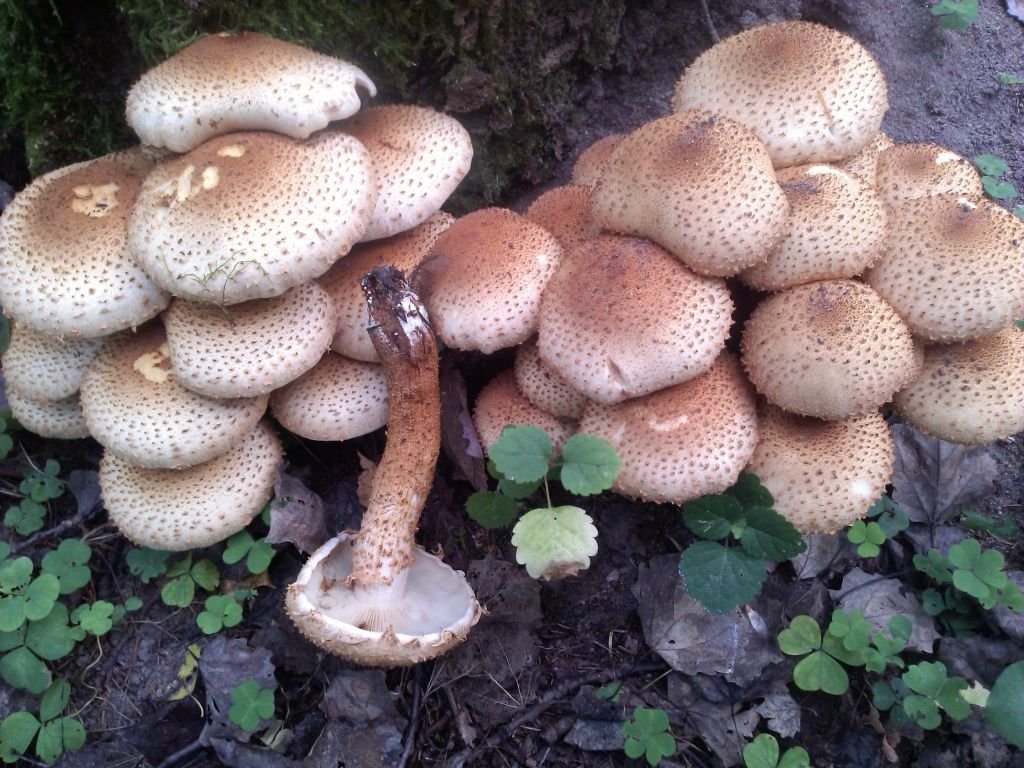
Spreading
Scale grows from mid-July to early October (massively from late August to late September) in different forests on dead and living wood, on trunks, at the base around the trunks, on the roots of deciduous (birch, aspen) and less often coniferous (spruce) trees , on and around stumps, in groups-bunches, in colonies, not infrequently, annually Young fruits have a blanket that breaks later, and its remnants can remain at the edges of the cap or form a ring on the stem.
Common flake - The most common type of flake. It grows in Europe. North America and Japan, appearing in summer and autumn on the roots, stumps and at the base of the trunks of beech, apple, spruce. It is an edible mushroom of poor quality, as its flesh is tough and it tastes bitter. Several related species are similar in color to common scaly. In autumn, mushroom pickers often confuse common scaly with autumn honeydew, but honeydew is not hard and large-scaled.
Description
Common scaly (Pholiota squarrosa) has a cap with a diameter of 6-8 (sometimes up to 20) cm, at first hemispherical, then convex and convex-outstretched, with numerous protruding pointed, flat lagging large scales of ocher-brown, ocher-brown on a pale -yellow or pale ocher background.
The leg is 8-20 cm long and 1-3 cm in diameter, cylindrical, sometimes narrowed to the base, dense, solid, one-color with a cap, rusty-brown at the base, with a scaly ring, above it is smooth, light, below it - with numerous concentric lagging ocher brown scales.
Plates: frequent, thin, adherent or slightly descending, light, yellowish-brownish, brownish-brownish with age.
Disputes:
Ocher spore powder
Pulp:
Thick, fleshy, white or yellowish, according to literature data, the leg is reddish, without a special smell.
Video about the mushroom Scalychia:
Edibility
The edible mushroom (according to some experts, conditionally edible, and even for some reason inedible), is used fresh (boiled for about 20 minutes) in the second courses, it tastes better when salted and marinated with spices. The spruce form is slightly bitter, it is better to salt and pickle it. Legs are collected only from young mushrooms with an unopened cap and yellowish (not brownish) flesh.
Fire scales (Pholiota flammans)

Hat: the diameter of the cap is from 4 to 7 cm. The surface of the cap has a bright yellow color. Dry, covered with sparse, bristly upwardly twisted small scales. The scales are lighter in color than the cap itself. The scales form an almost regular pattern on the cap in the form of concentric ovals.
The young mushroom has a convex cap, which later becomes flat and spread. The edges of the cap remain, wrapped inward. The hat is fleshy. The color can range from lemon to bright red.
Pulp: not very thin, soft, has a yellowish tinge, pungent odor and astringent bitter taste. When broken, the yellowish color of the flesh changes to a brown color.
Spore powder: brown.
Plates: in a young mushroom, the plates are yellowish, in a mature mushroom, they are brown-yellow. Notched plates adhered to the cap. Narrow, dense, orange or golden when young, and dirty yellow in adulthood.
Stem: The smooth stem of the mushroom has a characteristic ring. In the upper part, above the ring, the surface of the leg is smooth, in the lower part it is scaly, rough. The leg has a straight cylindrical shape. In a young mushroom, the leg is solid, then it becomes hollow. The ring is placed very high, it is densely covered with scales. The leg has the same red color as the cap. With age, the scales climb a little, and the ring on the leg does not last long. The height of the leg is up to 8 cm. The diameter is up to 1 cm. The pulp in the leg is fibrous and very tough, brownish in color.
Edibility: Flame scales (pholiota flammans) are not eaten, but the mushroom is not poisonous. It is considered inedible due to its unpleasant odor and bitter taste.
Similarity: fiery scales can easily be mistaken for ordinary scales, the surface of the cap and legs of which are also covered with scales. In addition, these two mushrooms grow in the same places. You can unknowingly confuse fiery scales with other representatives of this genus, but if you know all the features of Pholiota flammans, then the fungus is easily identified.
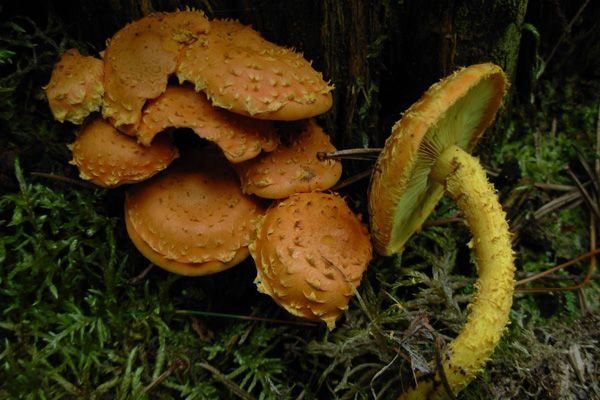
Distribution: Flame scales are found quite rarely, as a rule, one by one. It grows from mid-July to late September. Prefers mixed and coniferous forests, grows mainly on stumps and deadwoods of conifers.
Notes: Fiery scales cannot be called the most colorful and original. The fleecy flake looks much more original and surprising, and the golden flake is much brighter.
White-crested scaly (Hemistropharia albocrenulata)
Synonyms:
- Pholiota albocrenulata
- Hebeloma albocrenulatum
- Stropharia albocrenulata
- Pholiota fusca
- Agaricus albocrenulatus
- Hemipholiota albocrenulata
Hemistropharia is a genus of lamellar fungi, the classification of which is still somewhat ambiguous. Perhaps the genus is related to Hymenogastraceae or Tubarieae. Monotypic genus, contains one species: Hemistropharia albocrenulata, Russian name White-crested scaly.
This species, originally named Agaricus albocrenulatus by the American mycologist Charles Horton Peck in 1873, has been renamed several times. Other names include Pholiota albocrenulata and Stropharia albocrenulata. The genus Hemistropharia strongly resembles the typical Pholiota (Foliota), it is in this genus that the white-crowned scaly was originally classified and described, and it is considered a wood-destroying fungus, like the real Foliota.
Microscopic differences: Unlike Pholiota, Hemistropharia has no cystidia and darker basidiospores.
Description
Hat: 5-8, under good conditions, up to 10-12 centimeters in diameter. In young mushrooms, it is bell-shaped, hemispherical, with growth it acquires a flat-convex shape, may be broadly bell-shaped, with a pronounced tubercle.
The surface of the cap is covered with concentrically located wide, light (slightly yellowish) lagging fibrous scales. In adult specimens, scales may be absent.
On the lower edge of the cap, white felt hanging scales are clearly visible, forming an elegant fringe.
The color of the cap varies, the color range is red-brown to dark brown, chestnut, chestnut-brown.
The skin of the cap is slimy in wet weather and can be easily removed.
Plates: adherent, frequent, very light in young mushrooms, light gray-violet. Most sources indicate this detail - plates with a faint purple tint - as a distinctive feature of white-bellied scales. Also, young mushrooms often have white, light, oily drops on the edges of the plates. In older mushrooms, it is noted that dark purple-brown clusters can be seen inside these droplets.
With age, the plates acquire chestnut, brown, greenish-brown, violet-brown colors, the edges of the plates may be jagged.
Leg: 5-9 centimeters high and about 1 cm thick. Dense, solid, hollow with age. With a fairly well-defined white ring in young mushrooms, turned upwards, like a bell; with age, the ring acquires a somewhat "ragged" appearance, it may disappear.
Above the ring, the stem is light, smooth, longitudinally fibrous, longitudinally striped.
Below the ring, it is densely covered with large, light, fibrous, strongly protruding scales. The color of the leg between the scales is yellowish, rusty, brown to dark brown.
Flesh: light, whitish, yellowish, more yellow with age. Dense. Odor: no special smell, some sources note a sweetish or weak mushroom. Obviously, a lot depends on the age of the mushroom and the growing conditions. Taste: bitter.
Spore powder: brown-violet. Spores 10-14 x 5.5-7 microns, almond-shaped, with a pointed end. Cheilocystids are bottle-shaped.
Season and distribution
It parasitizes living hardwood, most often aspen. It can grow in tree holes and roots. It also grows on rotten wood, also mainly aspen. It is found infrequently, in small groups, in the summer-autumn period.
In Russia, it is recorded in the European part, in Eastern Siberia and in the Far East. Outside Russia, it is distributed in Europe, North Africa and North America.
Similar species
In dry weather, it can look like destructive flakes.
Notes: Pholiota albocrenulata var. albocrenulata and Pholiota albocrenulata var. conica. Alas, no intelligible descriptions of these varieties have yet been found.
Photo: Leonid
Signs of poisoning with false mushrooms and side effects

The first symptoms of poisoning with false mushrooms appear within 15-20 minutes
However, they are not always paid attention to. The stomach begins to grumble, the person complains of discomfort, a feeling of heaviness in the stomach
Symptoms gradually increase. Dizziness, heartburn and cramping pain appear first in the epigastrium, and then spreads to the entire abdomen. They are followed by severe nausea and repeated vomiting. After 2-3 hours, the person's hands begin to tremble, weakness and drowsiness appear. The skin is covered with clammy sweat. Diarrhea joins.
Dehydration is another problem. It develops due to severe vomiting and diarrhea. The first symptoms are dry mouth, viscous saliva, constant thirst and oliguria (the patient has a sharp decrease in the amount of urine excreted). Later, shortness of breath appears, the skin becomes dry, and urinary flow ceases (anuria). Without adequate replenishment of fluid in the body, it is possible to develop acute renal failure and disorders in the work of many organs and systems.
If you drink alcohol, then it is better to give up mushroom dishes, as alcohol increases the effect of toxins.
The hepatobiliary system also suffers from poisoning with false mushrooms.The skin acquires a yellow tint, the liver increases in size, there is a feeling of heaviness and pain in the right hypochondrium. The patient feels bitterness in the mouth.
Types of scales
Common scaly (Pholiota squarrosa)
The cap is 5-12 cm in diameter, hemispherical or conical, later convex and plano-convex, the edge is bent. The surface is covered with dry scales of a bright yellow color, slimy to the touch. The pulp is light yellow, has a faint earthy odor and a rare taste. The leg is 5-19 cm high, 1-3 cm thick, with a fibrous ring, whitish above, reddish-brown below, covered with a dark coating.
A widespread species, grows on living and dead wood of deciduous and coniferous trees.
Edible scale (Pholiota nameko)
An edible mushroom used in Japanese cuisine for miso soup and pickled. It is cultivated in China and Japan.
The cap is small, 1-2 cm in diameter, orange-brown in color, covered with a slippery jelly-like substance. The mushroom grows in groups, on stumps and trees of broad-leaved species, for example, on beeches, like honey agarics, thin legs up to 5 cm high emerge from one base.
Alder scale (Pholiota alnicola)
The cap is 3-7 cm in diameter, the shape is narrowly convex, in mature mushrooms it becomes flat-convex, the edge is bent. The surface is slimy, lemon-yellow, olive-brown in the central part. The pulp is pale yellow, brownish in the stem, has a weak fruity odor, the taste is mealy, sparse. The leg is 3-13 cm high, 0.5-1 cm in diameter, in old mushrooms it is hollow, covered with a coating of white, yellow at the top, reddish-brownish at the bottom.
A parasitic fungus that grows on dead wood of deciduous trees, alder and willow.
Distribution and cultivation
Under natural conditions, allusions are found in mixed forest areas, where increased moisture levels are noted, reaching 90-95%. Referring to saprophytes, they prefer stumps and places near the roots of fallen trees. They grow in large colonies of several mushroom legs, growing from a single base.
For culinary purposes, edible flakes are grown artificially. When breeding under artificial conditions on sawdust and substrates obtained from broad-leaved species, mainly beech, special shelters and the mandatory use of air humidifiers are required.
How to cook: cooking
The most delicious edible foliots are called golden, common and gum-bearing ones - their pulp has a normal smell and a typical mushroom taste, comparable to that of honey mushrooms.
There are many ways to make flakes. They can be used as an ingredient in soup, in the main course, in salted pastries, sauce, salad. Foliots are also fried, pickled, and salted. Traditionally, they are not dried.
Most doctors do not recommend eating mushrooms without heat treatment because it will cause dyspepsia. It is best to rinse and boil the product to prevent indigestion. The product prepared in this way is eaten without decoction.
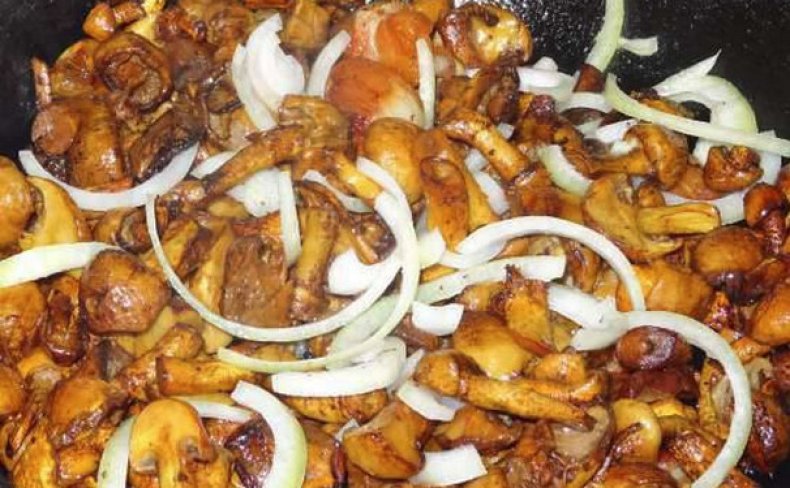
We recommend that you read about pickling, drying and freezing mushrooms.
The body of the foliota is completely usable, but for hot dishes it is better to use the caps, and for pickles and marinades - the whole mushroom.
Signs of poisoning with false mushrooms and side effects

The first symptoms of poisoning with false mushrooms appear within 15-20 minutes
However, they are not always paid attention to. The stomach begins to grumble, the person complains of discomfort, a feeling of heaviness in the stomach
Symptoms gradually increase. Dizziness, heartburn and cramping pain appear first in the epigastrium, and then spreads to the entire abdomen. They are followed by severe nausea and repeated vomiting. After 2-3 hours, the person's hands begin to tremble, weakness and drowsiness appear. The skin is covered with clammy sweat. Diarrhea joins.
Dehydration is another problem. It develops due to severe vomiting and diarrhea.The first symptoms are dry mouth, viscous saliva, constant thirst and oliguria (the patient has a sharp decrease in the amount of urine excreted). Later, shortness of breath appears, the skin becomes dry, and urinary flow ceases (anuria). Without adequate replenishment of fluid in the body, it is possible to develop acute renal failure and disorders in the work of many organs and systems.
If you drink alcohol, then it is better to give up mushroom dishes, as alcohol increases the effect of toxins.
The hepatobiliary system also suffers from poisoning with false mushrooms. The skin acquires a yellow tint, the liver increases in size, there is a feeling of heaviness and pain in the right hypochondrium. The patient feels bitterness in the mouth.
Fire scales (Pholiota flammans)
Fiery scales - lat. Pholiota flammans
The fiery scale is known only by this name, both among the people and in the botanical world.
Mushroom cap
Scale babies are very cute. They look at the world like little suns with spherical heads of bright orange color, "prickly" from flaky pointed scales. But as soon as they grow up a little, the balls turn into convex hemispherical caps 3-5 cm in diameter of a rich yellow-orange color in the center and somewhat lighter at the edge bent inward.
The scales no longer puff up so much, but do not adhere tightly to the surface of the cap, twist slightly with their tips upward, forming a regular concentric pattern. The scales are somewhat lighter than the main color of the mushroom, so it looks terry.
By the time of ripening, the cap grows to 7 cm in diameter. Now it becomes open with slightly curved edges, on which you can still see scraps of a private bedspread in the color of yellow ocher scales.
The firescale cap can change color as it matures from lemon to fiery red.
The fungus hymenophore consists of yellow or orange narrow, often planted, adherent plates. By the time they ripen, their color changes to dark orange or even brown.
Stipe
The straight cylindrical stem of the fire scale has the same color as the cap. From the very base to the ring, it is densely covered with scales, which, as the mushroom matures, can climb a little. After breaking the private veil, a felt ring remains, which very soon disappears, leaving only a barely noticeable strip, above which an insignificant part of the trunk to the cap is absolutely smooth.
The scales do not grow very high, the maximum length of the legs is 8 cm, and the thickness is 1 cm. Its pulp is fibrous, rather dense and tough, when broken it becomes brown in color.
 Fire scales (Pholiota flammans)
Fire scales (Pholiota flammans)
Emergency medicine for mushroom poisoning
- Gastric lavage. At home, you should drink water and induce vomiting by pressing on the root of the tongue. In a hospital, this procedure is carried out using a probe.
- Cleansing enema. They bet if more than two hours have passed since the poisoning.
- Reception of adsorbents. Activated carbon, Enterosgel and other drugs will help to bind toxins and render them harmless.
- Drinking salted water or medications that work to combat dehydration. Water is drunk in small sips, often. The drugs are taken according to the instructions. When vomiting stops, the patient can be drunk with strong sweet tea.
- Wrapping. The victim must be warmed up. Hypothermia can occur due to severe dehydration. Warm blankets, heating pads, and complete rest are the first things to do when vomiting and diarrhea stop.




